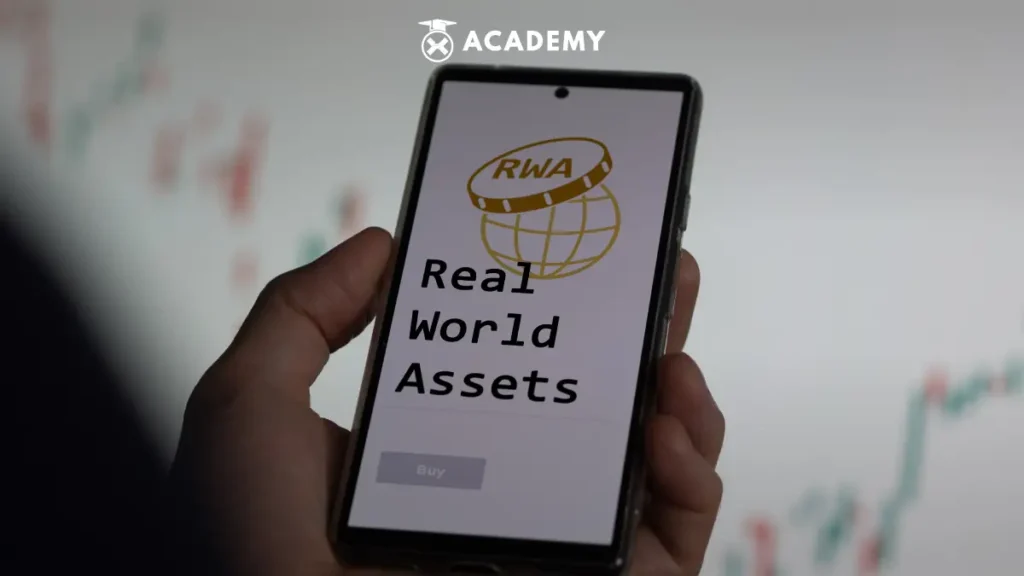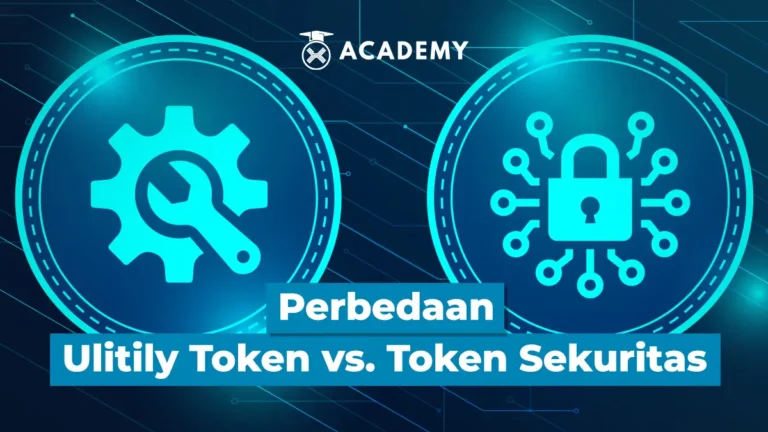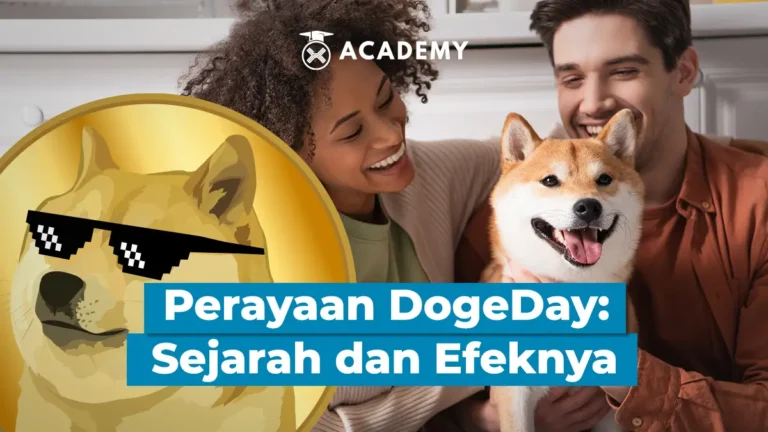Have you ever imagined being able to have digital investments that are based on physical assets in the real world? The good news is, now this possibility has become a reality through the concept of Real-World Asset (RWA) tokenization using blockchain technology.
RWA is a digital representation of physical assets obtained through a conversion process that utilizes blockchain technology and Distributed Ledger Technology (DLT). RWA is a real asset that can be represented in token form and has the potential to function as collateral in a Decentralized Finance (DeFi) platform.
Essentially, the RWA concept will bring the opportunity to combine real-world advantages with the advantages of decentralized technology. On the other hand, digital assets in the crypto world provide new financial innovations that are primarily characterized by decentralization and anonymity.
So, to understand RWA, its purpose and use, how it works, the tokenization process, examples of RWA tokenization, and its advantages and disadvantages, see the complete review below.
What is Real-World Asset (RWA) and its History?
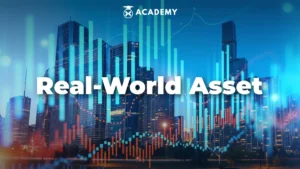
Real-World Assets (RWA) refer to physical assets with economic value in the real world. These assets can be physical objects such as property, vehicles, or works of art and include intangible assets, such as intellectual property rights, copyrights, or trademarks. With the support of blockchain technology and decentralized ledgers (DLT), we can now tokenize RWA.
As mentioned earlier, RWA tokenization converts physical assets into digital tokens recorded on the blockchain. Through tokenization, real assets can be represented digitally on the blockchain. This process opens up opportunities for easier and more efficient trading and investing, especially for assets that were previously difficult to trade or illiquid.
RWA tokenization can represent various assets, including real estate projects, equity funds, and works of art such as the “Mona Lisa.” With RWA tokenization, the possibility of changing an asset becomes easier, allowing people to own a small portion of a valuable asset, such as the “Mona Lisa,” without owning the entire work.
As an additional example, a stablecoin is a type of RWA that represents the value of one fiat currency using tokens in the blockchain. This asset tokenization process became possible thanks to the emergence of the Bitcoin blockchain.
The history of Bitcoin’s creation began with the publication of a whitepaper entitled “Bitcoin: A Peer-to-Peer Electronic Cash System” by an individual or group using the pseudonym “Satoshi Nakamoto.” This whitepaper was published on October 31, 2008, via a cryptography mailing list called “The Cryptography Mailing.” Later, the development of Ethereum as a global computing platform for smart contracts sparked the growth of various variations of blockchain and DLT technology. Furthermore, the emergence of stablecoins became the original product of the fiat currency tokenization process.
Purpose and Use of RWA (Real-World Asset) Tokenization
Why is the tokenization of real-world assets important? First of all, RWA tokens can be used in the DeFi ecosystem. Real-World Asset fall into the Traditional Finance (TradFi) category, which consists of rules, intermediaries, and other elements.
Through tokenization, the goal is to bring these assets into the decentralized world so they can become part of the growing DeFi ecosystem. It should be emphasized that DeFi has significant differences from traditional banking systems and financial institutions.
DeFi, for example, represents significant cost savings, including reduced margins, labor, and almost non-existent operational costs. DeFi protocols and tools, such as Automated Market Makers (AMM), Liquidity Pools, and others, enable instant settlement of transactions, a feature that has long been missing in the TradFi world. Ultimately, with the RWA token, the advantages and accessibility of real-world assets can be integrated with the innovative side of DeFi.
How Real-World Asset (RWA) Works
The Real-World Asset (RWA) tokenization process involves converting physical assets into digital tokens stored on the blockchain. This process is carried out through at least the following four steps, namely:
1. Asset Evaluation and Valuation
Before the tokenization process begins, assets must go through an evaluation and appraisal stage. This step aims to determine an accurate price or valuation of the asset.
2. Creation of Smart Contracts
Creating a smart contract is the next step in the tokenization process. Smart contracts are designed to regulate the function of tokens and represent the value of physical assets precisely in a blockchain environment.
3. Verification and Audit
Independent auditors are involved in the verification and audit stages. They ensure that assets and tokenization processes properly comply with established standards. This step is important to ensure the integrity and security of the token.
4. Token Issuance
The token is issued after passing the verification stage and becomes tradable on the crypto market. Issuing these tokens creates a tradable digital representation of a physical asset that has undergone tokenization.
The Tokenization Process: How Blockchain Facilitates Real-World Asset Tokenization
Quoting cointelegraph.com, real-world assets are converted into digital tokens through a tokenization process made possible by blockchain technology to easily buy, sell, and trade on the blockchain platform.
The following is how blockchain makes it easier to tokenize physical assets that you need to know, including:
1. Asset Identification and Valuation
The initial stage in this process involves identifying and assessing the real-world assets to be tokenized. Assets can be real estate, fine art, commodities, or intellectual property. The asset’s value is determined, and a decision is made regarding dividing the asset into digital tokens.
2. Legal and Regulatory Compliance
Ensuring compliance with applicable rules and regulations is important before proceeding with tokenization. Legal entities, such as Special Purpose Vehicles (SPV), can be developed to facilitate tokenization while remaining compliant with applicable regulations. SPVs are created for specific financial purposes, such as storing and managing assets, reducing risk, or facilitating investments.
3. Creation of Smart Contracts
Blockchain-based smart contracts are created to govern how tokens will be created, managed, and traded. Automating various processes and guaranteeing that they are carried out according to agreements relies on smart contracts.
4. Blockchain Platform Selection
The next step is to choose a suitable blockchain platform for tokenization. For example, Ethereum can be chosen because it supports smart contracts and has a strong developer community. Other blockchain platform options with tokenization features are also possible.
5. Token Creation
Next, digital tokens represent ownership or rights to physical assets. Each token generally represents a small portion of the asset’s value. Token development using the chosen blockchain often follows established token standards, such as ERC-20 for Ethereum-based tokens.
6. Ownership Records
A visible and immutable ledger in the blockchain records token ownership, including information regarding token owners, purchase, sale, and transfer transactions. This transparency plays an important role in preventing theft or ownership conflicts because every transaction detail is documented and can be accessed by all parties involved.
7. Safe Custody Solutions
Protection of the physical assets underlying tokens requires effective custody solutions. These solutions can involve physical security measures for concrete assets, such as real estate or secure storage for digital assets.
8. Trading Platforms (Exchanges) and Markets
Trading platforms or markets are formed where assets that have gone through a tokenization process can be acquired, sold, and traded. Connectivity with crypto exchanges simplifies access for investors to trade with these tokens.
9. Accessibility and Liquidity
Tokenization of physical assets increases accessibility and liquidity. Unlike traditional markets with strict trading restrictions and expensive barriers to entry, investors can trade these tokens around the clock, making them more accessible.
Real-World Asset (RWA) Tokenization Example
There are several types of Real-World Asset (RWA) instances that can be integrated into the blockchain world through the tokenization process. The following are examples of RWA tokenization that you need to know, including:
1. Stablecoins
Stablecoins are crypto tokens whose value is held by fiat currency, such as US Dollars or Euros. Stablecoins present a stable currency alternative for transactions in the blockchain ecosystem.
2. Artwork
Examples of RWAs include works of art that can be represented as Non-Fungible Tokens (NFTs). For example, a painting by Andy Warhol entitled “Untitled (Banana),” created in 1985, was converted into an NFT digital asset in 2021.
3. Real Estate
Real estate tokenization is a digital representation of physical property. In this context, property assets are broken down into tokens stored in a decentralized database, facilitating efficient ownership and trading.
4. Commodities
Commodity tokenization facilitates investors’ ability to trade commodity shares, such as gold, silver, and oil. For example, Digix Gold Token (DGX) has a value tied to the price of physical gold held in Digix vaults in Singapore.
Pros and Cons of RWA
Real-World Asset (RWA) tokenization brings several advantages when compared to traditional RWA investing methods. Here are some of the advantages, namely:
- Increased liquidity: RWAs that have gone through tokenization can be traded on the market 24/7, increasing their liquidity levels compared to conventional RWAs. This makes it easier for investors to buy and sell tokens more easily and quickly.
- Reduced costs: Tokenization of RWAs can reduce costs associated with investing in RWAs. This process eliminates the need for intermediaries such as brokers and bankers, potentially reducing overall costs.
- Increased transparency: RWA tokenization gives investors higher transparency regarding RWA ownership and management. All transactions are recorded in the blockchain providing clear and reliable insights.
- Democratization of finance: Tokenization of RWAs can play a role in democratizing the financial sector by making access to RWAs easier for more investors.
Even though it has some advantages, RWA is not free from disadvantages. The following are several disadvantages of RWA that are important to pay attention to, including:
- Complex regulatory challenges: RWA tokenization faces challenges from complex regulations. Real-world assets must comply with various financial regulations in various jurisdictions. Know Your Customer (KYC) and Anti-Money Laundering (AML) requirements are required.
- Links to physical assets that must be well regulated: It is important to ensure that the tokens representing RWA are fully associated and connected to physical assets in the real world. Loss or lack of clarity in this relationship can raise issues regarding the integrity and value of the RWA token.
- DeFi ecosystem volatility: While RWA tokenization brings stability to the DeFi ecosystem, there remains a risk of volatility. Crypto and DeFi asset prices can experience significant fluctuations in short periods. This may affect the value of the underlying RWA assets and make them not completely risk-free.
What are the Real-World Asset Projects?
As the DeFi ecosystem continues to develop, more and more protocols and projects are emerging to support the tokenization of Real-World Assets (RWA). The following are several protocols and projects that support RWA in the DeFi ecosystem, including:
1. Maple Finance (MPL)
Maple Finance is a DeFi protocol focusing on decentralized lending using RWA as collateral. This protocol specifically accommodates institutional borrowers.
2. Centrifuge (CFG)
Centrifuge is a protocol that integrates real-world assets (RWA) into the DeFi ecosystem thereby creating a more open and accessible financial system. The protocol emphasizes a high level of security by implementing strict legal standards, KYC procedures, and technical audits to ensure security and reliability.
3. Goldfinches (GFI)
Goldfinch is a decentralized credit protocol that enables crypto asset lending without requiring crypto asset collateral, with loans collateralized off-chain. Goldfinch Finance’s main focus is to provide loans to companies, especially loan funds and fintech companies, by providing credit loans in USDC.
4. Realio Network (RIO)
Realio Network is a distributed network that aims to modernize the process of storing, issuing, analyzing, and exchanging asset tokens. It provides a solution for regulatory compliant token issuance and provides complete infrastructure to support RWA tokenization.
Potential of Real-World Assets (RWA) in DeFi Network
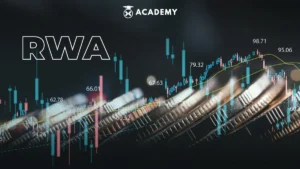
The potential use of RWA in the DeFi ecosystem is promising. RWA tokenization can form a more robust and decentralized ecosystem. Here are some potential uses of RWA in DeFi networks that you need to know, namely:
1. Improved Stablecoin Stability
Stablecoins backed by RWA can provide higher value stability in the DeFi ecosystem, thereby reducing the risk of volatility that often occurs in the crypto market.
2. Exposure to Real-World Assets
Through RWA tokenization, crypto asset holders can gain exposure to real-world assets, such as real estate or bonds, without owning the assets physically.
3. Improvements in DeFi Lending Protocols
Lending protocols in the DeFi ecosystem that accept Real-World Asset (RWA) collateral can attract the interest of more borrowers and real-world asset owners. This could drive growth in decentralized financial services.
Please note that the use of RWA in the DeFi ecosystem continues to grow with the emergence of projects focusing on tokenizing real-world assets. This potential also opens up opportunities for further innovation in the DeFi space and the blockchain ecosystem as a whole.
What are the RWA Challenges?
One of the main challenges in Real-World Assets (RWA) is regulatory complexity. In addition, Real-World Assets (RWA) must comply with various financial regulations in various jurisdictions.
The RWA tokenization process must pay special attention to and comply with legal requirements, including Know Your Customer (KYC) and Anti-Money Laundering (AML) regulations. This step is important to ensure compliance and security in using these assets in the DeFi ecosystem.
In addition, the sustainability of the token’s link to real-world physical assets is an important aspect. When real-world assets are represented through tokenization, a clear mechanism must be used to associate each token with an actual physical asset. The loss or lack of clarity in this link can cause problems with the integrity and value of the RWA token.
What’s the Difference between RWA vs NFT?
Quoting learn.bybit.com, an NFT Real-World Asset (RAW), is a unique digital token that shows ownership of a physical asset. Unlike other digital assets, such as crypto or virtual goods, RAW NFTs are directly connected to the tangible, physical world.
These characteristics provide some advantages and challenges that differentiate them from other NFTs. Some of the benefits of NFT RAW include:
- Scarcity and provenance: RAW NFTs can establish digital scarcity and provide proof of ownership for abundant or difficult-to-verify physical assets. They create a digital record of ownership and value on the blockchain by certifying the authenticity and ownership of items such as art or collectibles.
- Enhanced liquidity and access: Using NFTs, physical assets that are typically difficult to sell or access now have new ownership and trading methods. They also enable the division of assets into small units, which can be bought and sold by many people worldwide via global markets, lowering entry barriers and increasing asset liquidity.
- Unlocking value: Underutilized physical assets can be turned into a source of yield through the innovative use of NFTs. For example, owners of such assets can generate passive income by lending or renting them to other users on DeFi platforms or combining them with other digital elements to create new forms of expression or utility.
Meanwhile, some of the NFT RAW challenges include the following, including:
- Guaranteeing property rights: Legal and technical solutions are needed to ensure the enforceability and security of property rights. A clear legal framework is needed for NFTs to define the transfer, enforcement, or revocation of ownership rights in cases of dispute or fraud.
- Complex regulatory and compliance environment: Navigating regulatory uncertainty and compliance issues can be difficult for those involved in NFTs. Consideration must be given to various laws and regulations, depending on the physical location of the asset and others.
- Dependence on trust: The tokenization process relies heavily on trust and reputation among all parties involved.
Conclusion
In conclusion, Real-World Asset (RWA) tokenization inherently carries some benefits, risks, and future potential that must be considered. Some benefits include increased liquidity and accessibility, portfolio diversification, DeFi stability, and DeFi lending innovation.
Meanwhile, the risks of RWA tokenization include complex regulatory challenges, the risk of unclear linkage of RWA to physical assets, and the challenge of volatility in the DeFi ecosystem. On the other hand, the future potential of RWA, including opening the door to the democratization of finance, RWA bringing further stability in DeFi, and the potential for creating further innovation in DeFi and the blockchain ecosystem.
Invest in Crypto Assets on INDODAX with Staking (EARN) Feature
So, now you understand what RWA is, the purpose and use of tokenization, how it works, the tokenization process, examples of RWA tokenization, and the advantages and disadvantages.
Next, if you are interested in investing in crypto assets with the crypto staking feature (EARN), choosing a safe and trusted crypto exchange on INDODAX would be a good idea.
This crypto staking feature lets you secure your crypto assets, like storing funds in a savings account. The crypto assets you lock through the INDODAX Earn feature will provide rewards, such as interest earned from savings.
It is important to note that the INDODAX Earn crypto staking feature can be accessed easily, anytime and anywhere, via the Mobile or Desktop App on the INDODAX website, especially on the INDODAX Earn crypto staking page.
Let’s start investing in crypto assets through the INDODAX crypto staking feature right now!




